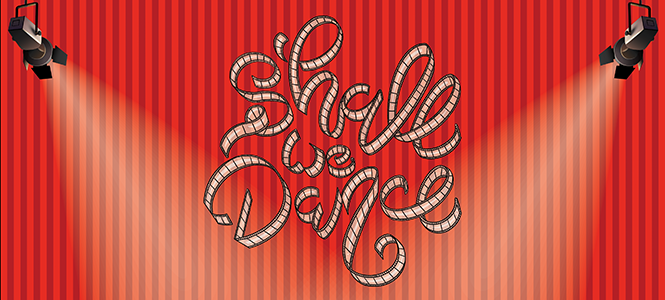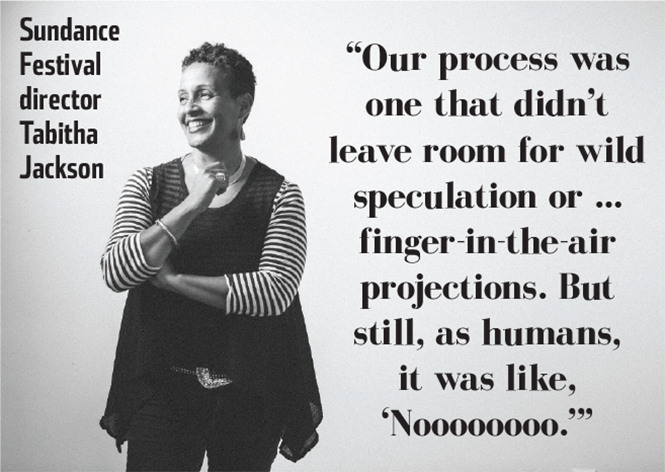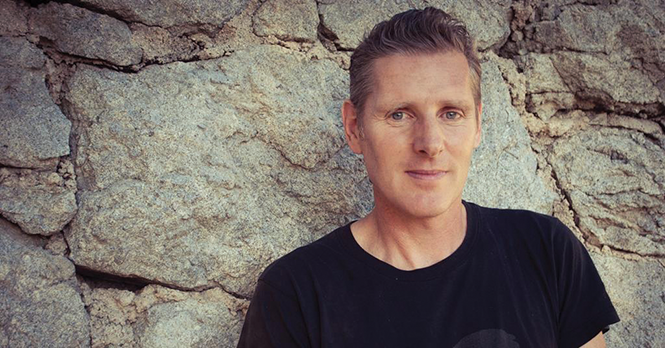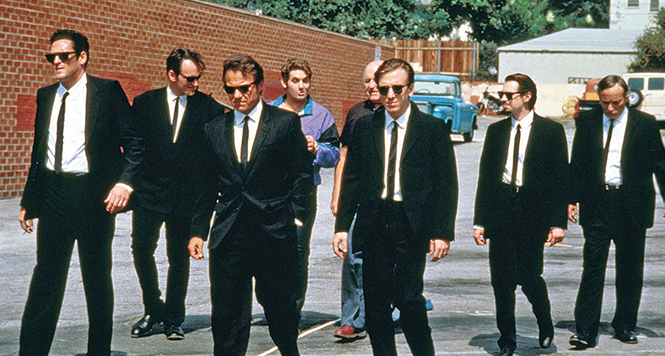Shall We dance
Utah's January film festivals press ahead through uncertain times.
By Scott Renshaw @scottrenshawTwo days after the announcement that the 2022 Sundance Film Festival would be cancelling its in-person events and moving to an online-only format, festival director Tabitha Jackson had had a little time to process. The impact on a personal level was clear. "I think that this week," she said, "has been the hardest of my professional career."
The two years of Jackson's tenure at the helm of Sundance have been the strangest and most unpredictable in the festival's history. After 2021's shift to an entirely virtual festival, the plan was in place to make Sundance 2022 a hybrid event, with virtual screenings complementing the traditional live screenings in Park City and Salt Lake City. Even as late as Dec. 23, with the Omicron variant leading to a surge in COVID-19 cases, Sundance was sending out updates to the health and safety policy that still assumed the in-person festival experience—then just a month away—was good to go.
Returning from the holiday break, however—with the announcement of more than 14,000 new COVID cases on Jan. 3, including nearly 1 in 24 Summit County residents testing positive—it was clear that things had changed. "Truthfully, I never thought the in-person would need to go away until the last few days," Jackson says. "What did it was the data, it was as simple as that—the total clarity of the realization that, with the new data, it would be irresponsible to proceed.
Jackson said the new information given to organizers included that the peak of Omicron transmission would fall during the festival. "I completely trusted the process," Jackson said. "Our process was one that didn't leave room for wild speculation or ... finger-in-the-air projections. But still, as humans, it was like, 'Noooooooo.'"
Because of the consequence of this decision, according to Jackson, a lot of people in the Sundance Institute organization had to be part of the process, including the Board of Directors and new Sundance CEO Joana Vicente. "This was a decision of some significance," Jackson said. "It's a big hit, in practical terms. But everybody was on the same page about what we needed to do."
Once the decision was made, however, the process of communicating it presented its own logistical challenges. According to Jackson, every effort was made to reach out to the filmmaking teams ahead of the more public announcement of the move to all-virtual, but it proved complicated to reach everyone, even as rumors of the change began circulating.
"The decision was of such magnitude, that as soon as we had made it, we needed to try to get to the filmmakers before we announced it publicly, but they were pretty much simultaneous," she says. "There was a lot of chatter going on that morning [of Jan. 5], but we had to focus on getting to the film teams. We couldn't really choreograph this."
From a mental energy standpoint, building the virtual platform from scratch for the 2021 festival and having to make this pivot for 2022 were both difficult, Jackson admits, but in different ways and for very different reasons. "It's complicated," she says of whether this year has been harder than 2021.
"We had our hopes up [this year], and we needed to pivot right at the last minute. Last year, the trauma and loss of the pandemic meant that it was a different atmosphere where we were making a decision even to put a festival on," Jackson said. "Now we have vaccines, the stakes are different and the atmosphere is different. We had this moment ... of coming back out onto the streets and getting together, so it feels like something has been taken away again."
If there's any silver lining, it's that Sundance already did have the experience of the 2021 virtual festival under its belt, and the confidence that it could still be successful, even if in a completely different way. Jackson credits the design of the schedule, which included online "premiere" occasions to allow for that collective moment of experiencing a work for the first time, rather than an exclusively "on-demand" structure.
Additionally, the virtual waiting rooms and live Q&As allowed for interaction both between viewers, and between viewers and filmmakers, for the closest possible approximation of that giddy festival experience.
And with that 2021 experience came the ability to debrief about it and make it even better. "Ever since last year, we've done huge rap sessions to understand what the pain points were for our audience and our artists [of the virtual festival experience]," Jackson says. "So we've been working on that for almost a year now, and we have a smoother, more inclusive experience on the festival platform."
Still, Jackson knows that something is lost in the lack of live screenings, and that the filmmakers are feeling that loss. Jackson herself recalls watching last year's U.S. Documentary Competition winner, Summer of Soul (or, When the Revolution Could Not Be Televised), and feeling the elation of a specific scene involving a duet between gospel legend Mahalia Jackson and young Mavis Staples. "I wanted to be with other people when that happened," she says.
For the moment, she takes comfort in the fact that those same filmmakers gave her the boost of positivity she needed during that crushing week. "In those hardest of times, having to tell filmmakers," Jackson says, "every response I have received has expressed their disappointment, but also a grace, and acknowledgement of the bigger picture. That's been so moving to me. Our filmmakers desperately wanted to be here, but they understood."
Virtual Realities
Slamdance looks beyond the pandemic to the advantages of streaming cinema for low-budget filmmakers.
BY SCOTT RENSHAW
Peter Baxter—co-founder and president of the Slamdance Film Festival—doesn't love the idea of an all-virtual film festival, either. Like Sundance, Slamdance held its 2021 festival entirely in a virtual space and, like Sundance, there were initial plans for an in-person Park City festival in 2022, which was then cancelled due to the omicron variant COVID spike.
Yet while Baxter acknowledges the sense of community generated by a live festival, it's also clear that he sees the developments necessitated by the pandemic as ones that low-budget independent filmmakers can benefit from.
"We're really, of course, disappointed that we can't be in Park City this January," Baxter says. "We were excited to be getting back together with our filmmakers. ... But while we can be disappointed about not doing that, we can be positive about the opportunities in front of us right now in a new landscape, which has to do with a 100-year-old business model, and I think the pandemic has just accelerated that change."
Over the course of its now-27-year history, Slamdance has existed largely in Sundance's shadow, with a mission born out of recognizing the kinds of films that Sundance couldn't serve, and a tradition of holding the in-person festival at the same time as Sundance to help connect filmmakers with industry folks who would already be in town. There was, however, the reality that micro-budget films rarely get the opportunity to break into the mainstream of theatrical exhibition. And that has meant re-thinking, and embracing, alternate distribution methods.
"We want to find the biggest audience possible for our filmmakers, and for their talents to be recognized," Baxter says. "We've retained the pragmatic viewpoint that yes, we'll have Slamdance films that will blow up, and that people will write about, but there are few like that. And what about the rest? How do you do more for the rest of your program to reach a wider audience?"
For Baxter, that notion of reaching a wider audience was in part inspired by the experience of the virtual 2021 Slamdance. He notes that more than 20,000 individual festival passes were sold last year—for only $10 to access the entire festival program—representing 75 countries. "We found new audience members for Slamdance films in all kinds of places in the world," he says, "and those people would not be normally traveling to Park City, so they were discovering our types of filmmakers and programming for the first time."
Creating the platform itself was, of course, a stressful experience. And the decision to move the Slamdance festival dates later and away from an overlap with Sundance was in part a unique opportunity to carve out a distinctive space, but also a practical matter of allowing the small festival team the necessary time to get the platform up and running. "It wasn't straightforward, but it was fun, and we had a good experience with it," Baxter says. "It allowed us to focus on something here at a time when it was very stressful, to immerse ourselves in something that occupied us. ... It was like getting chucked in at the deep end, and learning how to swim quickly."
The result of learning how to swim in the streaming world—in a way that broke even and allowed Slamdance to provide all its filmmakers with a small amount of compensation—has now inspired the creation of a year-round streaming platform hosted at slamdance.com. The notion of a year-round "film festival" showcasing low-budget indie filmmaking is part of what Baxter calls the "evolution of the film festival," one that allows greater accessibility for audiences and a wider audience for the filmmakers.
"We hope it really will contribute to re-evaluating the world of independent film," Baxter says. "To me, it's tended to be exclusive since I've been around, tended to limit itself in terms of accessibility. It can be expensive to go to film festivals, few of them get wide releases, and then how do you find them?"
Even in the world of mainstream Hollywood filmmaking, 2021 was a rough year, one that inspired complicated questions about the long-term future of the theatrical experience. Baxter has no interest in seeing that go away, but for decades now he has been part of a filmmaking world where the theatrical experience wasn't likely to be in the cards anyway. From a limited-time virtual festival, Slamdance has recognized the opportunity to bring more filmmaking voices out into the world.
"I want to see film on the big screen, I'm looking forward to that, and that's not going to change," Baxter says. "But I also want to see films that I can't see on the big screen, the kind of films we're passionate about. ... I hope there's a growing audience for following that kind of creativity. Art isn't about likes and analytics. It transcends all that."
Slamdance Film Festival
On demand Jan. 27 – Feb. 6
$10 full festival passes
slamdance.com
The Class of '92
A look back at the festival year that made "Sundance" a brand name.
You could inspire a lively debate among film enthusiasts by asking when Sundance, the film festival, turned into Sundance, the brand. It could have been as early as 1989, when sex, lies and videotape emerged to become a minor hit and an Oscar nominee. Maybe it was 1994, the year of Clerks and Hoop Dreams. Maybe it was 1996, the year of the bidding wars for Shine and The Spitfire Grill. There's no clean delineation, no magic switch that was flipped to turn an insular mountain gathering into the place to find the Next Big Thing.
It's hard to deny, however, the impact of what became known as "The Class of '92." It wasn't necessarily about launching a bunch of superstars—really, only Quentin Tarantino (who debuted Reservoir Dogs at Sundance in 1992) might reasonably earn that distinction. Instead, it was more about a collective sense that different kinds of stories, and different kinds of storytellers, were going to get a chance to be seen and heard. And it all happened 30 years ago this month.
Reservoir Dogs was certainly the talk of the festival while it was going on, though it ended up winning none of the competition awards. Tarantino griped in subsequent years that it was because the jury thought that "Hollywood's knocking on your door, you don't need us." Yet there was still a connection that developed between QT and some of the festival's other alums, including Alexandre Rockwell (whose In the Soup won that year's Jury Prize) and Allison Anders (Gas Food Lodging). Those three, along with 1993 Sundance alum Robert Rodriguez, would join forces for the 1995 short-film compilation Four Rooms, cementing the sense that they were sort of a "Brat Pack" of American indie cinema.
That was also the year when a Sundance panel heralded the emergence of a "New Queer Cinema," represented in the festival lineup by Gregg Araki's The Living End, Tom Kalin's Swoon and Christopher Munch's The Hours and Times (the latter of which speculated on a gay romance between John Lennon and Beatles manager Brian Epstein). It marked the first time that queer filmmakers started taking control of their own stories, in ways that were sometimes outrageous, sometimes subtle, but never closeted.
Even the documentary lineup had its breakout creators. While Errol Morris had already made an impression a couple years earlier with The Thin Blue Line, his profile of Stephen Hawking, A Brief History of Time, became one of the festival's hottest titles. The 1992 slate also introduced Joe Berlinger and Bruce Sinofsky with Brother's Keeper; the filmmaking team would go on to follow a controversial murder trial for nearly 20 years in the three Paradise Lost films.
Every Sundance year presents a new opportunity for individual breakouts, whether in front of the camera or behind it. It takes a special year like 1992, however, for there to be a sense that entire paradigms had shifted. Perhaps more than any specific career the festival has launched, Sundance's 1992 edition launched the idea of what the festival could be in the larger film culture—when being a "Sundance movie" started to mean something that even people who'd never been to the festival understood.
How to (Virtually) Sundance
The omicron COVID variant threw us all a bunch of curve balls as 2022 got underway, and the cancellation of the in-person Sundance Film Festival was certainly one of them. Now, while you don't have to navigate the logistics of Park City—parking, getting from one festival venue to another during high-traffic times, finding a place to eat that doesn't cost an arm and a leg—you will need to figure out the logistics of the festival's online platform.
If you participated last year, most of the particulars are fairly similar. If not, here are the basics for how to participate in Sundance '22 from the comfort of your home.
Create an account. Everything on the online platform at festival.sundance.org is predicated on creating your individual account, including the ability to interact with other festival-goers in the "spaceship" that hosts the Film Party as well as the New Frontier programming. Upload a picture, create an avatar, and get yourself ready to choose films.
Choose films. At press time, both select festival packages and individual film tickets were available for purchase for most titles. The full festival program (also at festival.sundance.org) includes descriptions of the films in all of the various categories, as well as the times and dates they'll be available for viewing.
Pick your viewing time. Every festival film has at least two primary viewing options. The "Premiere Screening" takes place on a specific date, with a three-hour viewing window beginning at a specific time. While you can watch the film in its entirety if you begin any time within that three-hour window, it's recommended that you start at the beginning of that window if you want to participate in the live Q&A session with the filmmaking team. You can enter the "lobby" for the film 15 minutes before the viewing window start time, with a chance to chat with other audience members.
The "Second Screening" window for each film begins at 8 a.m. MT two days after its "Premiere Screening" date, and lasts for 24 hours until 8 a.m. the next morning. Again, you can begin any time within that window. A third screening option will be available for festival prize-winners on Jan. 29 and Jan. 30; visit the website on those dates for specific titles and screening times.
Check your tech. You can, of course, watch films through your computer via festival.sundance.org, where your selected films will appear on your calendar—or an HDMI cable or wireless cast can turn your TV into a theater screen. Those with Roku or AppleTV setups can also download the Sundance festival app and follow the steps to get your account connected. And the festival app will also be available for iOS and Android on phones and tablets.
Enjoy and participate. Audience members will still get a chance, as was true for live screenings, to submit a ballot as part of the festival's Audience Awards. As previously mentioned, you can share questions with filmmakers as part of the live Q&As, and interact with other festival-goers in the screening lobby or in the spaceship's Film Party.
Watching the movies is only part of the experience, and while there's no way to truly duplicate an in-person festival in the virtual world, you can help make a festival experience that's truly interactive, and makes it the closest approximation until the state of the world allows for Park City to buzz with activity again.
More by Scott Renshaw
-
Film Reviews: New Releases for April 19
The Ministry of Ungentlemanly Warfare, Abigail, The Beast, Hard Miles, Sasquatch Sunset and more
- Apr 19, 2024
-
Faces of Salt Lake County book and portrait reception
Images and personal stories in a new book reveal local demographic diversity
- Apr 17, 2024
-
Feature film review: THE BEAST
A filmmaker's compelling ideas get a bit tangled in references to his creative influences.
- Apr 17, 2024
- More »
Latest in Cover Story
Readers also liked…
-
Forget the family pedigree—Robert F. Kennedy Jr should not be the next president of the United States
Trojan Horse
- Jun 21, 2023
-
Women decry harassment and toxic culture at St. George auto dealership
Men at Work
- Oct 11, 2023









